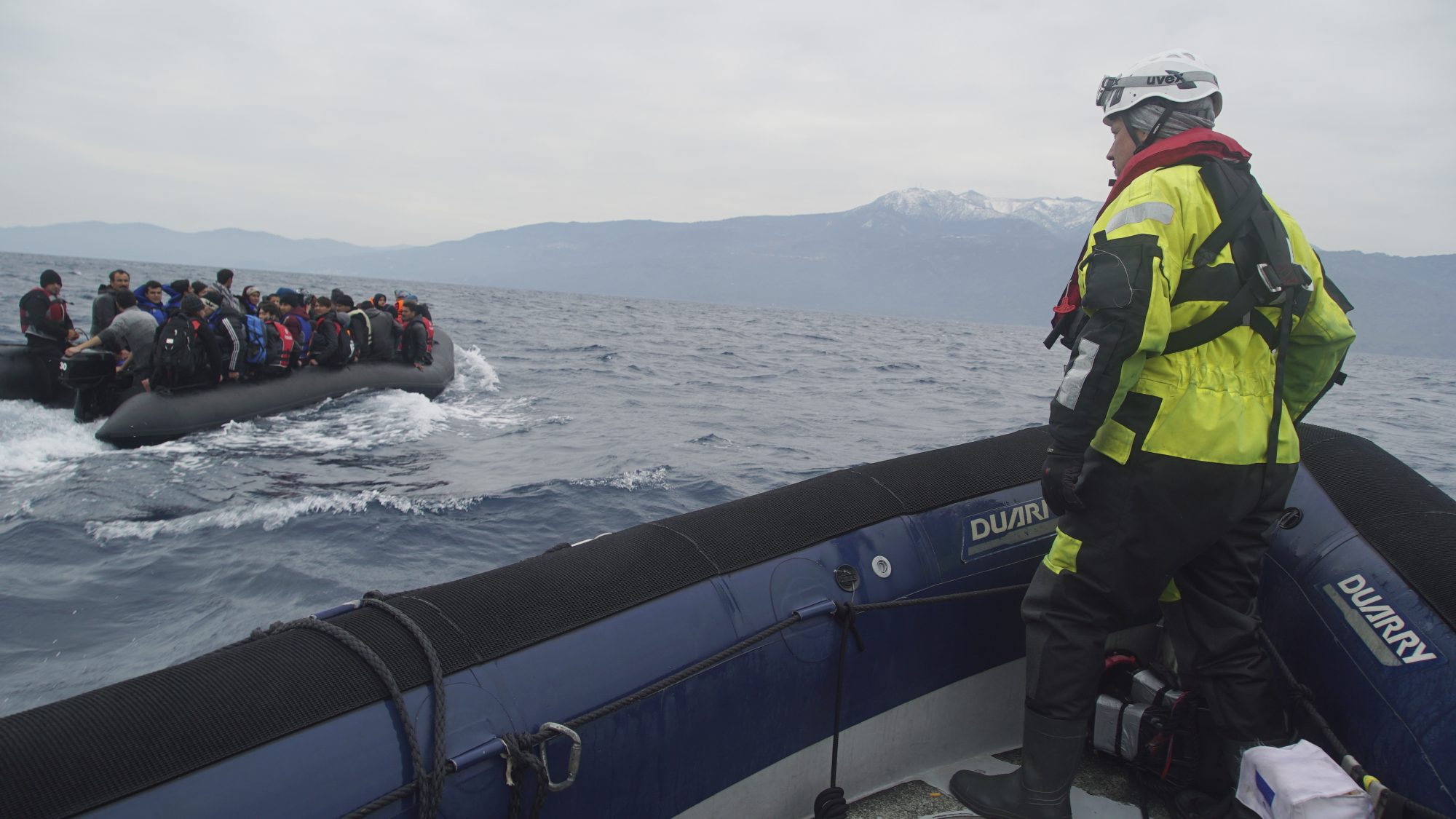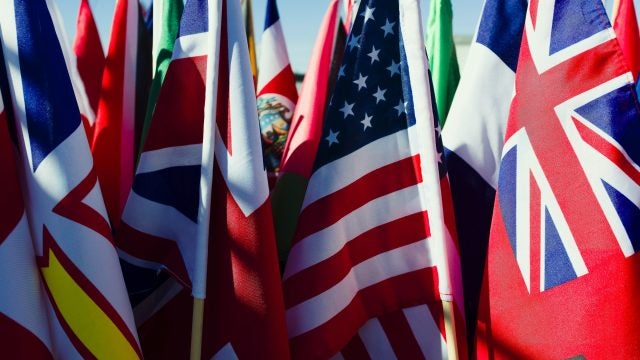
Title: Arriving at a Crossroads: Can Europe Avoid Replaying the Policy Failures of the 2014-16 Migration Crisis?
As irregular migration numbers once again soar to historic levels, Europe’s migration challenges remain a difficult challenge to surmount. After years of infighting and foot-dragging, an agreement on a long-stalled asylum pact was finally reached. However, more needs to be done to enhance future European cooperation around migration management and border protection.
Less than a decade after what has become known as the 2014-2016 European migration crisis, the European Union (EU) is once again facing a migration emergency. In 2023, more than 260,000 irregular migrants arrived by sea, and over one million people filed asylum claims in EU member states—numbers not seen since the height of the last crisis.
Russia’s 2022 invasion of Ukraine has only complicated matters further, with more than four million Ukrainians under temporary protection status (TPS) inside the bloc. This special status guarantees Ukrainians access to housing, schooling, healthcare, and employment, placing tremendous strains on European states. The symptoms of overwhelmed administrations are apparent: immigration case backlogs awaiting decision increased 34 percent over 2022 in just the first six months of 2023. Also in 2022, 13 European countries received the highest number of asylum applications on record, with just five states (Germany, France, Spain, Austria, and Italy) logging 70 percent of all applications. Amid high inflation and volatile food and energy costs, this situation threatens to overwhelm member states’ infrastructure and social systems. It also serves as potent electoral fodder upon which radical nationalist politicians are effectively capitalizing. And there are a few reasons to assume the number of people seeking to gain entry to Europe will decline anytime soon; in fact, quite the opposite.
The good news is that, paradoxically, the scale, scope, and timing of the current emergency led to long-stalled and long-stymied efforts to overhaul the EU’s common asylum policy finally bearing fruit in December 2023. The bad news is that the newly concluded pact will likely only ameliorate rather than solve the EU’s myriad migration challenges, and its successful conclusion comes at the lamentable cost of limiting some of Europe’s admirable and cherished human rights protections.
Immigration Constrains in EU
An overlapping set of geographical, legal, and political factors have made the EU’s migration challenges particularly thorny and onerous to surmount.
Europe’s asylum protection standards are generous and wide-ranging, with 50 percent of all applications for asylum or humanitarian protections lodged in EU+ states in 2022 being approved. The EU applies several layers of protections that afford asylum seekers considerable leeway to appeal rejected applications and return orders. Most EU countries also offer claimants significant social welfare assistance while their status is being determined, a process that often takes years. Moreover, a 2012 decision by the European Court in Strasbourg de facto extended Geneva Convention protections into international waters between Europe and its neighbors, being the first to do so in the ‘West’. Such protections are a key reason why Europe has struggled to surmount a smuggler-led crisis in the Mediterranean over the past decade.
The consequences have proven deadly: despite being the world’s calmest sea, the Mediterranean Sea witnessed more than 3,000 people on average drowning or going missing annually over the last decade while crossing.
Over the same period, EU member states only inched forward on reform of the Common European Asylum System—the set of rules, procedures, and standards that all EU countries are to apply when processing claims. The most widely known provision of the so-called Dublin Regulation, the system’s cornerstone, is that requests for asylum be adjudicated in the first European country of entry. This dissuasive measure was designed to signal that asylum seekers are not entitled to choose the EU country where they seek protection. However, over time, the European Commission added numerous rights-based elements to the Dublin scheme—viewed by many national officials as gold-plating —that left the resulting legislation open to abuses.
Despite years of bitter intra-EU feuding over rising irregular entries, a fundamental overhaul of the system was long viewed by European politicians as too difficult and politically perilous to tackle. However, in December 2023, the long-deemed impossible became finally achievable.
New Opportunities Down the Line
The first critical change was in political and public sentiment. While many in the European Parliament and civil sectors desire expansion of EU asylum provisions—including expanded search and rescue efforts in the Mediterranean and bloc-wide distribution of unproven asylum claimants via ‘mandatory relocation’—such positions are increasingly recognized to be politically untenable within member states. Regional and local authorities have progressively begun to point out the social and financial costs of the EU’s historically generous policies. Even the general public increasingly favors tightening EU asylum rules and procedures, despite vociferous criticism from human rights groups.
The second key change was a shift in position by traditional veto players, without whose support no agreement could be reached. For instance, after years of resistance, in June 2023, Italy suddenly flipped its stance on the new ‘Asylum and Migration Management Regulation’—which includes provisions to support overwhelmed frontier states, such as Italy and Greece. Likewise, during the fall of 2023, Spain’s EU presidency brokered a political agreement on an important complementary measure explicitly designed to help manage mass population influxes and reduce surge-related strains on the system. The new law would oblige states to activate crisis contingency plans when necessary and enable the provision of emergency surge capacity to beleaguered states amid migration crises. This translates into greater commitment, at least on paper, to quick processing of claims and rapid removal rather than the release of those not granted asylum or temporary protection.
The third key shift was an anticipatory one, as time pressures to generate an actionable solution became acute within the European Parliament. Recent polling suggests migration will be a central issue in European elections in June 2024, with significant gains predicted for far-right, anti-immigration parties. Thus, the Parliament’s traditionally liberal members recognized that it was better to conclude a deal while they still hold sway over the EU’s migration and asylum regime, rather than wait until after the upcoming election, when a far more restrictive view of asylum issues may prevail.
Overall, the intent of these reforms is two-fold: to prevent asylum seekers awaiting review from disappearing after registration, and to deter irregular economic migrants from using the asylum channel to enter Europe. However, now that the pact is finally signed, significant questions remain as to how well it will function.
Challenges Ahead
On the Mediterranean front, much depends on the ability of states to implement the proposed rapid screening process, intended to separate economic migrants from potential asylum candidates within one week.
Critically, the intended deterrent effect of this rapid administrative sorting will be nullified if countries cannot return those who do not qualify for protection to their home countries. European deportation rates have been falling, and as of 2022, only one in five of those deemed not eligible for international protection in the EU was returned to their country of origin. With secondary movements unchecked, incentives for frontier countries to “wave through” new arrivals northwards remain strong, and EU officials believe the numbers of secondary movements are on the rise.
Indeed, these “wave throughs” are so common that temporary border controls have been in place between six Schengen countries for years, with another half dozen or so additional states joining their ranks since 2017—despite legal threats from the European Commission and EU Court of Justice. Whether the burden-sharing provisions delineated in the New Pact on Migration and Asylum will reverse this trend remains to be seen.
To make matters worse, transit countries outside the EU are acutely cognizant of fears surrounding uncontrolled migration and have long exploited these fears to extract economic, military, and foreign policy concessions from the Union. Schengen countries hope the new package of measures will signal a renewed toughness on irregular arrivals to smugglers, outside observers, and particularly their own voters. How much of this signaling is political theatre designed to placate anxious domestic audiences versus a genuine commitment to undermine attempts at migration weaponization remains to be seen.
Moving Forward
No new strategy at the border can work without buy-in and at least some cooperation from states both on Europe’s periphery and farther afield. Critical measures in this regard include preventing irregular departures, convincing countries of origin to accept the repatriation of their citizens, and persuading both origin and transit countries to prosecute smugglers routinely. If the EU fails to effectively implement any of these measures, overhauling its asylum policy would have been for naught.
For external partners, countries such as Spain have provided an emulation-worthy model, given the key role transactional migration deals continue to play in EU migration policy. Transactional (forced) migration refers to quid pro quo political-economic deals, such as capacity building, aid, and work visas in exchange for preventing departures and accepting returns. While the picture is a mixed one, first-hand, personal observations of deal-making in action (by the authors) suggest that Spain has succeeded more than many other states in demonstrating diplomatic tact and wily inventiveness—with, for example, West African ECOWAS member states and North African countries, such as Morocco.
The EU has demonstrated the capacity to be a more credible and consistent partner by tightening visa requirements with non-cooperating countries, making some development aid conditional on accepting returns, and credibly threatening sanctions in certain instances. For instance, when Germany and other countries raised the specter of tougher visa procedures with countries such as Iraq earlier this year, return rates to the home countries began rising. However, EU officials still have much to learn, as evidenced by an embarrassing fracas this fall when a newly inked migration accord with Tunisia appeared to collapse before implementation.
Alongside the newly inked deal, there are an array of measures the EU can and should take to help maximize the asylum pact’s likelihood of success. One of those is to provide more alternative avenues for migrants to enter the EU safely and lawfully. A viable option is the European Commission and Parliament’s plan to expand legal channels for would-be migrants to access the EU’s labor market and efforts to speed up labor market integration of those granted asylum. This will urgently up Europe’s game in an accelerating global battle for talent, serve as a necessary corollary to cracking down on asylum system abuses, and signal to would-be migrants that turning to smugglers and traffickers is not their best option.
Though these measures are advantageous and potentially significant, the supranational cooperative impulses are mirrored by an ongoing heated, overtly restriction-focused debate about immigration at the national level—in Germany, France, Italy, and even Poland— on how countries should simultaneously ‘toughen up to open up.’ As demonstrated by this tension, unless the EU finds a way to do so as a truly united front, including by skillfully employing its geopolitical heft, the Union will never successfully master its migration challenges.
…
Hugo Brady is a senior strategic advisor at the International Centre for Migration Policy Development. Brady previously served as a home affairs advisor and speechwriter in the cabinet of the President of the European Council; as a senior analyst at the EU Institute for Security Studies; and as a visiting fellow at the London School of Economics.
Kelly M. Greenhill (Ph.D., MIT) is a political scientist with faculty appointments at Tufts University and MIT. Greenhill’s work spans four overlapping strands of research: the politics of information; migration, refugees, and security; military intervention and conflict; and coercion and asymmetric influence. Greenhill’s publications include the award-winning Weapons of Mass Migration: Forced Displacement, Coercion and Foreign Policy, second edition forthcoming.
The views expressed in this article are solely those of the authors and do not necessarily reflect the opinions or policies of the Journal.
Image Credit: Wikimedia Commons
Recommended Articles

On May 20, 2025, the World Health Assembly unanimously adopted the World Health Organization (WHO) Pandemic Agreement, an international treaty designed to strengthen pandemic prevention, preparedness, and…

As the Trump administration proposes a sweeping overhaul of the US foreign assistance architecture by dismantling USAID, the Millennium Challenge Corporation (MCC), and restructuring the State Department, there is an…

The Trump administration’s abandonment of allies and embrace of Putin’s Russia has raised pressing questions about whether Estonia, Latvia, and Lithuania can continue to rely on NATO for…